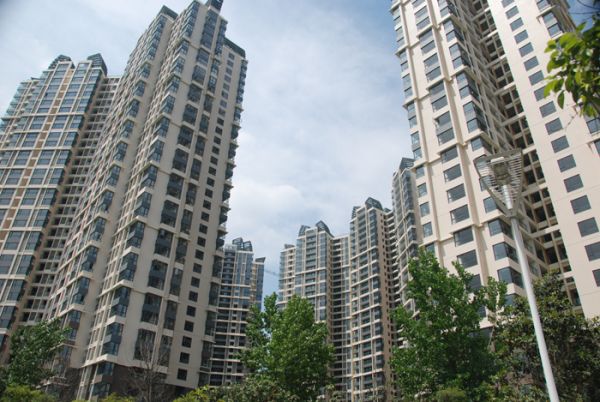


By Du Yuan (杜远)
Issue 619, May 13, 2013
Nation, page 13
Translated by Zhu Na
Original article: [Chinese]
Wenjiang (温江) District of Chengdu has experienced rapid urbanization over the past five years on the back of its real estate industry.
According to a 2012 report by the Chengdu Statistics Bureau, among the six districts and counties around Chengdu, Wenjiang’s urbanization rate was the highest at 54.6 percent.
But this kind of urbanization isn’t necessarily good news for Wenjiang’s economic development. The amount of fiscal revenue in the city reliant on real estate once surpassed 80 percent, and there’s little industrial progress to speak of.
Wenjiang is a poster child for how urbanization alone doesn’t necessarily bring sustainable economic development. Many scholars now realize urbanization shouldn’t be a government-led way to promote economic development, but rather, it should come naturally as a result of economic development.
Wenjiang reverted from a country to a district of Chengdu in 2002. With Chengdu’s rapid expansion, the move was an attempt to relieve some of the pressure on its central districts by directing much of the growing population to outer lying areas.
But today Wenjiang is still often called a “sleeping city.” For various reasons, many of the area’s homes remain empty.
As early as 2007, the concept of Wenjiang as a “satellite town” started to be pushed through advertisements by local government and real estate agents. “Work in Chengdu, live in Wenjiang,” the ads said.
29-year-old Zhang Chenguang (张晨广) works at a car shop in central Chengdu. In 2008, when he noticed housing prices were relatively low in Wenjiang, he decided to endure the long commute to work every day and buy a 90-square-meter apartment there.
After five years, Zhang certainly isn’t in want of peace and quiet. “Even during holidays you hardly see any people on the residential block,” he said. “Only one-third of the apartments have lights on at night.”
An EO reporter found that at 9:00 in the evening, besides a few residential blocks surrounding the Wenjiang district government, dozens of buildings had less than 30 percent of their lights on. There were over 50 residential buildings over 30-stories high that remained mostly dark.
The Wenjiang District government didn’t respond to EO’s request for an interview and data about home occupancy rates.
A local official, who spoke on the condition of anonymity, said that the city’s housing vacancy rate is relatively high, but one reason is transportation. The subway that links Wenjiang and the main parts of Chengdu hasn’t been completed yet, so some who bought homes in the district have yet to move in.
Wenjiang’s industrial development has also been relatively slow compared to other surrounding districts and counties like Shuangliu (双流), Pi (郫), and Longquanyi (龙泉驿), which have enjoyed rapid growth in IT, automobiles and other industries.
But besides the lack of transportation and industry, many of Wenjiang’s houses sit empty because people bought them as an investment; not to live in. Due to the already high housing prices in central Chengdu, Wenjiang has become very attractive to investors.
The Wenjiang official said that the primary reason for the district’s oversupply of houses and scarcity of industry is the government’s heavy-handed urbanization planning.
He said that since 2002, Wenjiang’s development has been controlled by Chengdu, which is gradually directing its growing population away from the urban center. Wenjiang has been expected to build a lot more housing in order to accommodate this shift. As a result, it freed up large swaths of land very quickly, which drove real estate development.
Land auction information shows that in 2005, the whole of Chengdu had an open land supply of 2,932 acres, of which Wenjiang supplied 927 acres. Then in 2006 and 2007, Wenjiang’s land transaction volume reached over 329 acres each year - more than any other district or county. Taking into consideration the development cycle and factors like developers hoarding land, many of Wenjiang’s current empty homes sit in what was built on these land deals.
Meanwhile, Wenjiang’s own land policy has also added fuel to the real estate industry fire. In the beginning of 2010, it launched a program for giving subsidies to those who buy houses in the district.
But the large number of empty houses isn’t as big of a danger as the underlying problem, which is that the city has come to over-rely on the real estate industry. As much as 80 percent of its fiscal revenue comes from selling land.
“Now Wenjiang is really worried,” the local official said. “The new party secretary is thinking about making an adjustment, but with the economic transition this is the most difficult time. Some things can’t be changed in a short period.”


